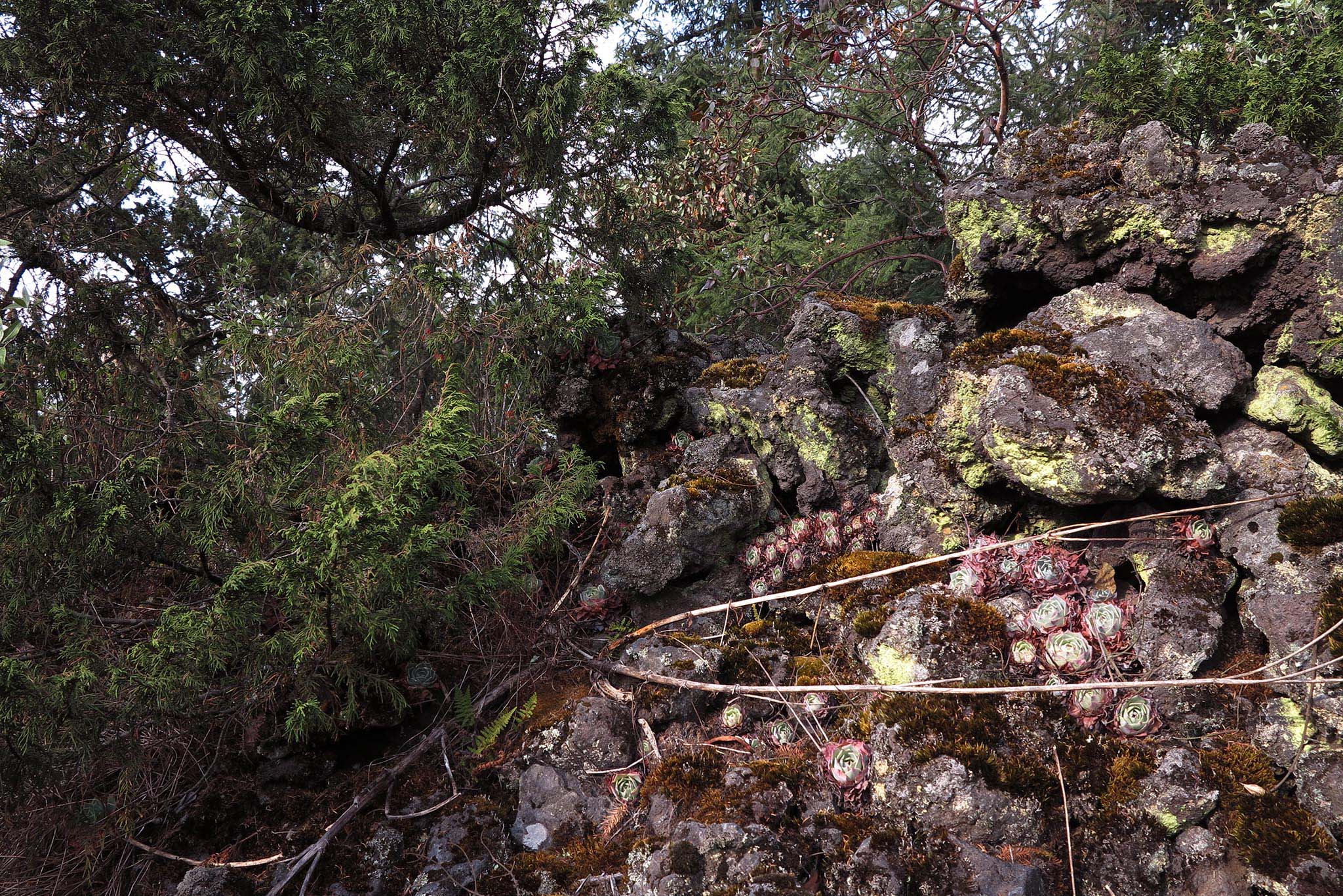I descended along the freeway to the Ajusco past the wooded fringe of the great Bosque del Agua, Forest of Water on the Southwest rim of Mexico City. I crossed the bridge over the bicycle path along the old railway to Cuernavaca with its attractive murals.
Impatience to be done with the trip quickened my pace as I walked over the gravel along the edge of the freeway. I was tired. It was early afternoon and the shadow of the mountain tumbled down its slope. Around a bend I saw some stone statues set out toward the road in front of me, behind a rusty wire fence. Behind the fence stood a large wood and cement structure set into the mountainside. In the courtyard/parking lot was an assembly of statues: the Virgin de Guadalupe, the Calendar of Sun, a jaguar, an eagle on a cactus eating a serpent, the skeletal Santa Muerte with her scythe. All were hewn from hard black basalt.
I was intrigued by the quality of the work. And as I loitered among the statues a man of about thirty years of age, heavily built with a moustache and black bushy eyes came out of the building behind which contained the workshop and house. He told me the place was his father’s. He was very polite and serious, but restless. He lived here and helped make and sell the statues. As I walked alone with him among half-finished pieces on their shelves I complimented him on his artistry.
He shrugged his shoulders and replied that this was not art. This was just commercial work. They were selling pieces to corporations and had a license to use official national symbolism. He had never made a work of art. But one day he hoped to be able to try. I told him I understood his predicament. A journalist is also an artisan. But to write a work of art is very different. He himself hadn’t given up hope.
I told him that when I worked in logistics we were managing the transport of an Olmec head to Veracruz and from there to a museum in the Netherlands. The head was oversize cargo and the truck carrying it had gotten stuck trying to turn a corner in a mountain village and could neither go forward or backward. I didn’t hear how they finally got it unstuck and back on its way to Rotterdam.

He nodded his assent. Stone is heavy.
I told him about my walk around the edge of the city. No doubt, you have changed as you went on, he said to me. I agreed. At the beginning of my walk I had been over-solicitous, too nervous and too polite. At this late stage in the game with the trip almost over I was much simpler and more forthright, a nicer person probably, though perhaps a bit strange.
He told me that if I had met him five years ago it would have been impossible for him to talk to me. He had schizophrenia. His family took him to see all kinds of doctors and they prescribed him medicines but it didn’t help. His case was given up as hopeless. He would never be cured.
Five years ago he wouldn’t have been able to look me en eye. He would have stood shuffling face to the ground. Every morning he stood up and walked to the mirror. In front of the mirror he said: “You are a cabrón and you are going to beat this thing.”
And slowly he had improved. I took it as an example.
We shook hands as I walked out the fenced yard cluttered with the symbolism of Mexico. The city stretched wide out to the North, an endless maze of mortar and stone. Guillermo Pérez turned and entered his workshop. The winding road among the trees beckoned and I continued down the mountainside. With nothing between Milpa Alta and myself, but the traditional communities of the Xochimilco delegation, I felt I was almost home free. All I needed to do was skirt the mountains and woodland communities of the city’s southern rim to reach San Francisco Tecoxpa.
